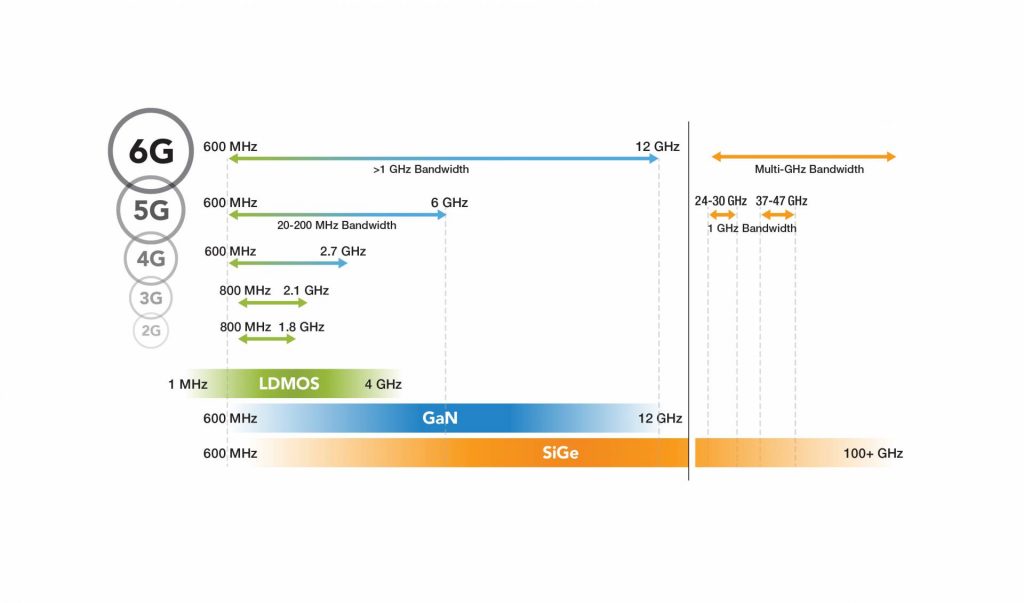Though many of you reading this storey are probably accustomed to seeing the 5G icon on your smartphone or tablet, the technology’s rollout is still in its infancy, and it’s easy to become complacent about its impact after so much talk.
The 5G Revolution is only just getting started
It’s time to remind ourselves that 5G is a game-changing technology that we’ve only begun to reap the benefits of.
The Obligation
5G wireless networks promise speeds at least ten times faster than current 4G networks (Verizon claims 20 times faster) and latency that is more than halved, from an average of 20-30 milliseconds for 4G to less than ten.
The sustainability benefits of 5G are also enormous: according to a recent study (telecompetitor dotcomstudy), 5G networks are up to 90% more energy efficient than 4G networks, which was attributed primarily to how technologists and manufacturers design and manufacture hardware and software today with a greater emphasis on efficiency.
Increased gaming performance, streaming, and interactivity.
Consumers will see improved gaming, movie streaming, and interactivity across a range of applications, from transactions to health. It will be used by autonomous driving and industrial automation to communicate more quickly and efficiently, resulting in increased safety and performance. Cities will rely on it to improve infrastructure, building, and road integration.
5G mobile internet connectivity will represent a quantum leap forward in terms of speed, capacity, and latency. By 2030, it could add $2 trillion to global GDP through health care, manufacturing, transportation, and retail alone.
The Obstacle
To power the millions of additional cellular base stations required to support this next-generation level of connectivity globally, three things will need to be done: Increase signal amplification to higher frequencies than previous generations of cellular, while consuming less energy and occupying the same footprint (i.e., existing 4G towers will be upgraded when available and possible).
Though 5G networks are expected to triple in size this year and reach 3.6 billion users by 2025, only a third of the world’s countries currently have access to 5G. It’s instructive to review the critical components that are still being developed, refined, or iterated and are driving this roll-out.
Amplifiers de puissance
To begin, power amplifiers (or base stations). The PA is located between the transmitter and the antenna in the signal chain of a cellular base station. It takes a low-level RF signal from the transmitter and boosts its power to the level required by the antenna. They are required in greater numbers for 5G to achieve faster speeds and greater coverage.
Numerous new base station architectures, including enhanced macro base stations and remote radio heads, small cells, and a new generation of active antenna solutions, are being deployed (mMIMO systems or massive multiple-input, multiple-output antennas).
Frequency of Radio
RF, secondly. Through mobile networks of all generations, including 5G, radio frequency or radio waves are transmitted and received between devices and base stations.
Radio Frequency electromagnetic fields operate at lower frequencies than microwaves and are used to “carry” data over long distances. RF is typically used to refer to frequencies up to 1 GHz; frequencies above that are referred to as “microwaves,” then “millimetre waves,” “infrared,” and “light.”
Additional Frequencies
Thirdly, there are “Other Frequencies“. Each generation of mobile broadband has added new frequencies, with 5G claiming more bandwidth than its predecessors. The speed of 5G will be largely determined by its use of higher radio frequencies. The FCC recently prioritised auctioning large amounts of high-band spectrum while also expanding and improving mid-band, low-band, and unlicensed spectrum.
GaN
GaN is the fourth material. GaN technology, or gallium nitride, is a semiconductor material with advantageous properties for high-power applications such as 5G. GaN semiconductors have a number of advantages, including increased temperature limits, increased power handling capacity, and faster switching speeds.
GaN outperforms other semiconductor technologies in RF applications that require signal transmission over long distances or at high power levels (such as base transceiver stations).
GaN is critical to the 5G buildout, and we recently opened the most advanced semiconductor manufacturing facility in the United States in Arizona.
LDMOS
Fifthly, there is LDMOS. This semiconductor is used in amplifiers that are microwave-, radio-frequency-, and audio-powered.
In comparison to GaN, it may be less expensive and is a more mature solution (i.e., has been tested for a longer period of time) for high power applications requiring operation in narrower spectrums. The choice of LDMOS or GaN technology is based on performance trade-offs and cost.
With increased industry adoption and technological advancements, it is expected that the cost of GaN will decrease.
SiGe
SiGe is the sixth element. Silicon-Germanium (SiGe) is a semiconductor technology that enables wireless applications to operate at high speeds and frequencies. Additionally, it is low-cost and extremely reliable, capable of reducing the size and power requirements of WiFi and cellular phones.
Additionally, it enables the integration of analogue, RF, and digital functions on a single integrated circuit, making it an excellent complement to GaN and LDMOS technologies.
Conclusion
As you can see, the path to global 5G deployment is still in its infancy and will require significant additional innovation and commitment. The promise is unambiguous, as are the requirements for fulfilment.

A view of cellular frequencies and the evolution to higher frequencies as the next cellular generations of 5G and eventually 6G are introduced. The key RF technologies LDMOS, GaN, and SiGe are illustrated operating at their respective frequencies and demonstrating their high-frequency, high-integration functionality.
The revolution is only just getting started.
Author provided the graphic; many thanks!
Credit for the top image: marko klaric; pexels; many thanks!







